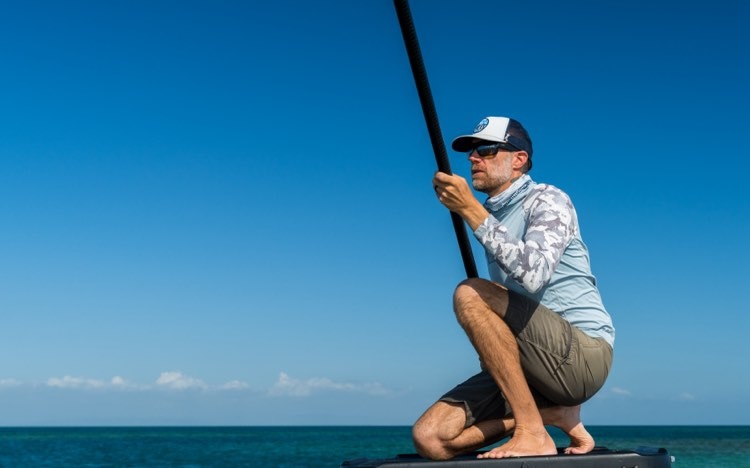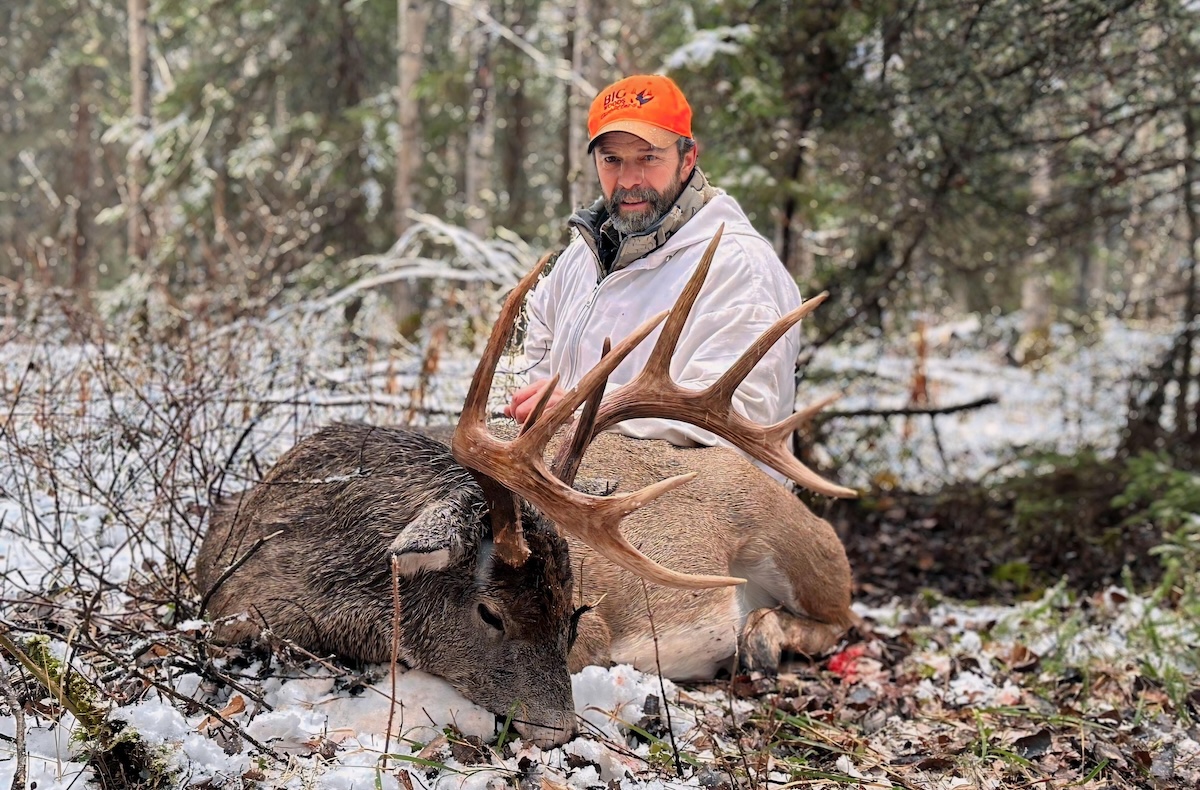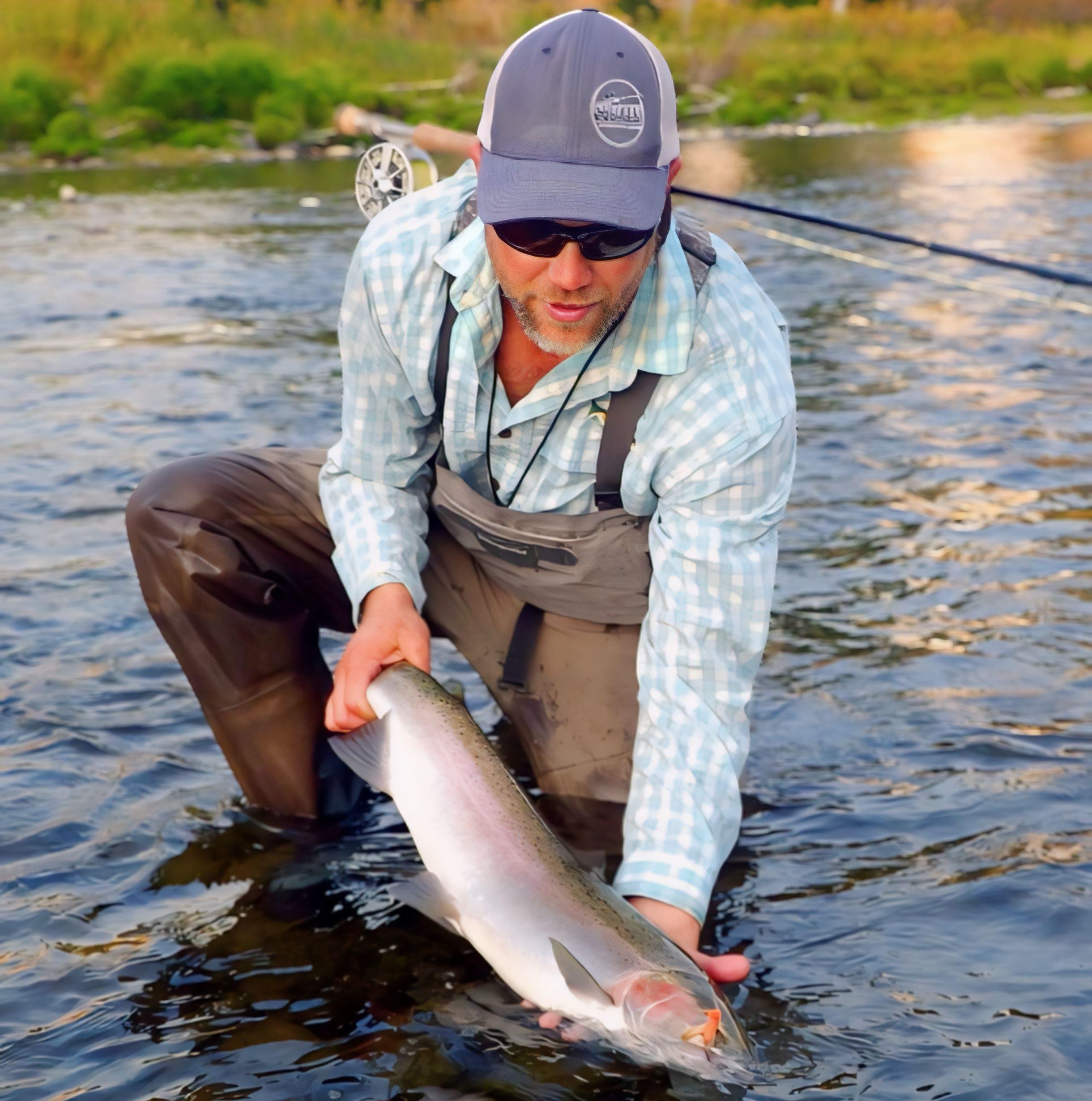In a world where technology continues to make our lives more and more convenient, hunting and fishing remain inherently challenging. To be successful, you have to be willing to at least take a short walk outside. Of course, there are still a lot of ways to make the outdoors a bit easier on yourself. Hiring guides, hunting on game ranches, or fishing in stocked ponds, and using things like trail cameras and other electronics all help make you as efficient as possible. Yet, there are still a lot of outdoorsmen and women on the other side of the coin who choose to do things the hard way.
These adventurous souls head into the outdoors to pursue the most challenging species in some of the most difficult places and often utilize techniques that make their goals innately more difficult. Whether they’re waiting for years to draw a tag, hunting with a bow during rifle season, or choosing to fly fish despite knowing that they’ll catch more fish with a worm, some folks just seem determined to make their lives more difficult. The question is, though, with so many easier paths to success out there, why do these hunters and anglers choose to challenge themselves?
Testing Your Mettle
Whether you’re trying to climb K2, stepping into a boxing ring, or openly questioning your in-laws’ cooking, we all seem to have an innate desire to push boundaries and find out what we’re really made of. For many hunters and anglers, that test comes by taking on the most challenging quarry in the most challenging of places and discovering what can be and must be endured. It’s the sort of determined and joyous agony where the reward of success becomes all the sweeter, and even failures are worth remembering. Winter steelheaders and backcountry elk hunters understand this phenomenon, but perhaps no one can identify with it more than sheep hunters.
“Sheep hunting is all about learning to enjoy suffering,” Mont Mahony, owner and operator of Alaska Dall Sheep Guides in Anchorage, Alaska, said. “That’s one key thing. Now, I know nobody actually enjoys suffering, but at the same time, on a sheep hunt, you’re going through something significant that takes a toll on your mind and body. It’s like the ultimate test of perseverance. And while you’re miserable for most of it, after you accomplish it, you think that it’s great. Almost every client I’ve ever taken for sheep says the same thing to me at the end, ‘That was the hardest thing I’ve ever done, but it was great.’”
Sheep hunters will spend thousands of dollars and wait for years for different tags, only to spend a week or more torturing themselves. With success rates for drawing a tag being around 2% on average, over 10,000 hunters try their luck at winning sheep lotteries across the US every year in hopes of undergoing the brutality of the hunt. Yet often, it is that brutality, not just the sheep, that these hunters want to experience.
“You put things into a sheep hunt that you didn’t know you had,” Mahony told MeatEater. “You can prepare all you want, but it still tests your endurance, your will, and your spirit like no other hunt can. It’s not an easy deal. You’ve got to put out a lot, yet even if you don’t get your ram, you still get something out of it. Sheep are such a beautiful animal and they live in the true cathedral of God’s country. I think that’s why so many people go for the tag. They want to see what they’re made of, and in the end, sheep hunting just does something to you that I can’t quite put my finger on—it just blesses your life.”

Cracking the Code
While testing yourself in a tough place is a big part of why many outdoors folks choose to pursue more challenging species, for others, it’s more about solving the puzzle. Certain species just become a riddle wrapped in an enigma in the minds of hunters and anglers that can’t quite be solved. These species are elusive and intelligent, allowing you to think you have them figured out one minute, only to have them slip away from you the next. It’s the kind of game that leaves you flustered but completely obsessed. Hunters chasing Coues deer and anglers fishing on spring creeks may experience this enigmatic fascination every time they go out, but no one understands the obsessive need to solve the puzzle better than a permit fisherman.
“If you’re thinking about going permit fishing, don’t do it,” permit guru Will Flack, head guide of Tres Pescados Fly Shop in Belize said. “Because once you start trying to crack the permit code, you’ll never want to fish for anything else. I mean, I grew up chasing steelhead. I’ve caught bonefish and tarpon, but it was just all a progression to permit fishing and trying to solve that ever-changing puzzle.”
Permit are considered to be the world’s most difficult gamefish. Every year, thousands of anglers flock to crystal clear ocean flats all over the world in hopes of notching their fly rods with one of these mysterious fish. However, most who try to land a permit end up going home empty-handed because they simply can’t figure them out.
“Permit just don’t readily eat flies and they’re spooky and hard to find, so there’s really only a handful of anglers who are catching them consistently,” Flack told MeatEater. “It’s just such a game of subtle changes where you have to find that little niche in a great big sea where a permit is going to eat. You just get beat up by them because they’re so mysterious and wary. You can go days and days on end without seeing a permit, or you can find hundreds of them, but they reject all the flies in your box. But at the same time, that’s why we like fishing for them.”
Finding a permit and figuring out what they’ll eat has become a complete obsession for many anglers. Often it comes to the point where they’ll even skip fishing for other easier-to-catch quarries just to go out and get their butts kicked by the wary and elusive fish swimming just out of reach in their minds.
“I’d rather go out and get beat up by a single permit than catch twenty bonefish or even a big tarpon,” says Flack. “The reward is just so much more. It’s like going into the ring with Muhammad Ali. You got a game plan, and then it changes after the first punch, and then it changes again. Yet you’ve got to solve that puzzle. You lie in bed at night and think of what you did wrong and then wake up and try something different. Catching a permit is one of the most special things in fishing. It makes you feel awesome at the end of the day, and that fuels the fire. Then you feel like complete shit for a couple weeks because you can’t get another one. It’s these fleeting moments of ecstasy where you get the right tide, the right flat, and the right fly that make the game worthwhile. The rest of the time, you’re just getting your face beat in, but it always keeps you coming back for more.”

Preserving Tradition
Solving a puzzle is part of the appeal of the outdoors for so many hunters and anglers, yet others choose to challenge themselves because it’s the way it has always been done. Many sportsmen find purity in a technique or weapon that has gone out of fashion or was used by our ancestors in the past. Instead of utilizing modern methods, they choose to hunt and fish in a way that they believe reconnects them to the very heart of the sport. Muzzleloader hunters, catfish noodlers, and even panfish anglers understand this primal need for tradition and reconnection, but perhaps no one understands it better than big buck trackers.
“I grew up tracking from the time I was about 9 years old or 10 years old,” renowned big game hunter and registered Maine guide Rick Labbe of Big Woods Bucks said. “It’s how I learned to hunt, and even though I’ve now hunted in 19 different states and Canadian provinces and chased all sorts of different species, I still think tracking whitetail bucks in the big woods is the most challenging and rewarding way to hunt there is. It’s just a pure way to kill a buck.”
Labbe and many other big buck trackers reject more popular ways to whitetail hunt. They don’t sit in tree stands or ground blinds beside agricultural fields or food plots because, despite having a better chance of success, they feel that the tradition of tracking and the skills required better connect them to their quarry.
“I love being on a buck track and learning about him,” Labbe told MeatEater. “Every buck you track is a little different in the way they act. They all have their little tricks, and you’ve got to figure out whatever that trick is to kill him. You just don’t get that when you hunt from a stand. I mean, it’s still challenging having to sit and wait on the buck and figure out where he’s coming and going, but you lose that cat-and-mouse game. You lose the exploration and figuring out the terrain and all those small aspects of being a predator that made our ancestors so successful in the woods.”
The fact is that, like making and using stone arrow points or catching and keeping your own fishing bait, tracking is almost a dying art being pushed aside by modern techniques. Many trackers hope that by continuing to follow footprints in the snow, they’re keeping an ancient tradition alive and well. In addition, many hunters believe that learning how to track whitetails sharpens your hunting skills and helps you be successful with other species.
“No one else in my family was a tracker, but it was somehow in my blood,” Labbe said. “It’s just one of those things that appeals to a certain type of person and is something that we need to keep doing and need to pass on to keep tracking around. Tracking in the big woods has just taught me so much about hunting in general. I’ve hunted elk for 20 years in Wyoming and Colorado, and I’ve killed the majority of my big bulls tracking them down in the snow as well. I just think tracking big bucks in Maine helped me be a better hunter everywhere I go. It’s the toughest way to hunt there is, but that’s why I do it, I want to keep the tradition alive.”

Making it Worthwhile
Tradition is so important to many hunters and anglers that they’ll often ignore other, more productive methods to hunt and fish their way. Yet there are others out there who choose more difficult techniques because they feel leveling the playing field brings them closer to what they love. By choosing a difficult hunting or fishing technique, you can find more time to appreciate your quarry and the world they live in and often only find success by reinserting yourself into the natural rhythms of that world. Traditional bow hunting, ice spearing, and Spey casting all carry aspects of this immersion into nature but no other technique better reflects the need for connection and appreciation than dry fly fishing for steelhead.
“Fishing with a dry fly for steelhead is not about catching a lot of fish, it’s about the process,” Idaho and Oregon fly fishing guide Chris Gerono, owner and operator of Boise River Guides said. “It’s about the preparation, the execution, and it is about being able to witness nature in a special way. Because each run of steelhead is finite, with a beginning of the run and an end of the run, your time on the water fishing for these fish is special and calls for a special technique.”
Though there are much more effective ways to catch steelhead, such as nymphing or trolling with large jerkbaits and other lures, steelheaders like Gerono continue to pursue the elusive fish with dry flies because they believe that it is the best way to connect with both the fish and the river itself.
“Sure, you can catch a sluggish, tired steelhead by repeatedly drifting a stonefly or other flies and lures in front of its nose,” Gerono said. “But fishing for steelhead with a dry fly is more like searching one out. You’re covering as much water as possible in the most efficient way and searching for a high-energy steelhead that is more willing to play. The process of fishing this way lends itself to observing nature in its process. If you enjoy dry fly fishing for steelhead, you enjoy the time between fish. You enjoy the cast, you enjoy watching the mink run along the bank, you enjoy watching the birds of prey searching for fish. You enjoy becoming a part of it all, and that makes you appreciate your time on the water all the more.”
One of the great concerns for steelhead anglers everywhere is that the fish are becoming harder to find. Between bad management practices, dams, and overreliance on fish hatcheries, catching a wild steelhead is becoming more of a challenge than ever, and so many anglers choose techniques that give the fish a better chance. A steelhead that is willing to hit a dry fly usually has plenty of energy and is unlikely to die from the experience of being caught and so by fishing this way, anglers are both helping to preserve the species while still pursuing them.
“Today, the process of wild anadromous fish in the Pacific Northwest is blocked by dams, nets, seals, and fisherman,” Gerono told MeatEater. “Because of all these factors, the Pacific Northwest steelhead are just squeaking by. So, instead of just going out and trying to catch a steelhead by any means necessary, why not choose a method that gives them a better chance? I mean, the bite may be slow but that just gives you time to better appreciate steelhead and the world that they live in. If it’s the right time of year, and the fish are in the water, go out and skate a dry fly because you never know what you might see. It might be a bear, it might be a golden eagle, and it might even be a streak of chrome trying to steal your skated dry fly. And it’s in those moments that making it just a little harder on yourself becomes completely worthwhile.”
There’s No Such Thing as An Easy Button
Perhaps the most unanimously appreciated thing about hunting and fishing is that success is always relative. While we all want to go out and get what we’re after, a good day outdoors can still be had when we come home empty-handed. No one goes hunting or fishing just because they want to harvest an animal or catch a bunch of fish. You do it because you love and appreciate the outdoor world and all the beauty, wonder, and challenge that it provides.
Challenging yourself in the outdoors isn’t about making things harder or showing off how great of a hunter or angler you are. It’s about finding a way to better appreciate the outdoor world on your own terms. The fact is that whether you’re climbing the highest peaks in pursuit of a mountain goat or taking a casual stroll down to the pond for bluegill, you’re always facing a challenge. In this modern world of traffic, video games, and binge-watching Netflix, every hunter and angler out there is stepping up to the trials of keeping the appreciation and love of the outdoors alive and well for generations to come.
Read the full article here

